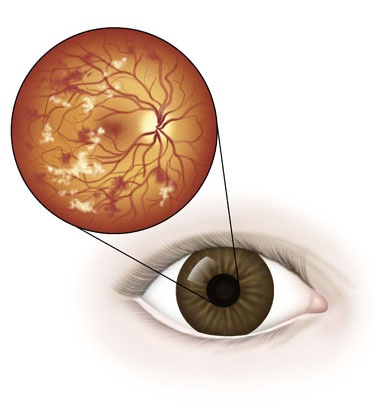What You Should Know About Diabetes and Eye Exams
Diabetes is a disease that profoundly affects many areas of your body, including your eyes. It increases your risk for eye conditions, such as ...
3 min read
 The Rochester Eye & Laser Team
:
Apr 19, 2022 2:06:05 PM
The Rochester Eye & Laser Team
:
Apr 19, 2022 2:06:05 PM

 Most of us take our eyesight for granted, that is until we start noticing changes and seek the advice of an optometrist. While eye problems can be associated with aging, they can happen to anyone of any age.
Most of us take our eyesight for granted, that is until we start noticing changes and seek the advice of an optometrist. While eye problems can be associated with aging, they can happen to anyone of any age.
It’s important to recognize the early signs of eye troubles so that your doctor will be ready to deal with them through any available treatments. Here are 7 things to look out for so you don’t lose sight of your eye health. There are more, but let's start here...
Cataracts are the result of clouding of the eye’s lens, which is like “looking through a frosty or fogged-up window.” Having a cataract will affect your ability to see near and far – from reading a book to driving a car.
Cataracts tend to develop slowly, so you may not notice any signs until they’ve had a chance to progress. You may notice you need brighter light or stronger prescription glasses at first – but if a cataract impairs your vision, surgery will be necessary. Luckily, cataract surgery is routine and generally safe.
This is another eye condition you’ve probably heard about many times, as it’s quite common. Glaucoma is the leading cause of irreversible blindness in the world. However, that doesn’t make it any less serious – it can cause vision loss and even complete blindness, it adds.
The condition is often associated with elevated eye pressure that in turn damages the optic nerve. The best way to detect glaucoma is by having regular eye exams that include testing intraocular pressure, as symptoms don’t usually appear early on, warns the site.
Keratoconus is the weakening of collagen fibers in the cornea, which is the transparent portion at the front of the eye. The result is the cornea bulges out and can cause tremendous loss of vision if it is not treated early and quickly.
We liken it to steel beams weakening in a building, leading to a collapse. There are minimally invasive new FDA-approved treatments available, but left too long a cornea transplant will become necessary to save your vision.
This condition is characterized by inflammation of the middle layer of the eye, usually the result of an injury or inflammatory disease. It can also be the result of exposure to certain toxic chemicals. Red eyes, sensitivity to light and eye pain are 3-common symptoms.
The condition is often chronic and can lead to other eye complications such as cataracts, elevated eye pressure, glaucoma, and retinal detachment. The condition is actually more common in the young adult to middle age categories – 20 to 50.
We’ve all had these at some point – some worse than others. They are translucent dots, strings, or other shapes (some a bit darker) that track across your vision. But what are they really, and what do they say about your overall eye health?
Most eye floaters are caused by age-related changes to the vitreous – a “jelly-like substance” in the eye that becomes more liquid as the years pass. Microscopic fibers within the vitreous tend to clump and can cast tiny shadows on your retina. While they’re not usually too concerning, if you suddenly notice a sharp increase in floaters, you should see an eye professional immediately, (especially if you see flashes of light or have trouble seeing out of the corners of your eyes). These sudden symptoms could actually point to a tear in the retina.
There are a number of conditions that can affect the retina, which is a very important layer of tissue at the back of the eye that converts light received through the eye’s lens into signals the brain can recognize. Without a working retina, you won’t be able to see.
Two of the most common retinal conditions are retinal detachment, which is when the retina changes position due to family history, cataract surgery, eye injury, or other diseases, explains the National Eye Institute. Diabetic retinopathy is – like it sounds – exclusive to diabetics and causes damage to the blood vessels of the retina.
This is a term you’ve probably heard people use – that’s because it’s the leading cause of severe and irreversible vision loss in people aged 60-or older. It is related to the deterioration of the macula, which is the small central portion of the retina, it adds.
The condition progresses as the patient ages, so it’s often referred to as age-related macular degeneration (AMD). It doesn’t usually blind a person completely, but it can be a source of significant visual disability.
If you have a family history, have been diagnosed, or are experiencing symptoms of any of these issues, you should have regular check-ups with an Optometrist and/or an Ophthalmologist.

Diabetes is a disease that profoundly affects many areas of your body, including your eyes. It increases your risk for eye conditions, such as ...

Clean, healthy air is a key component to clear vision. However, the connection between air quality and eye health is often overlooked. Dirty, musty,...

We are happy to introduce the newest OD to our patients and have her as our newest team member at the Rochester Eye and Laser Center. Dr. Jaime...